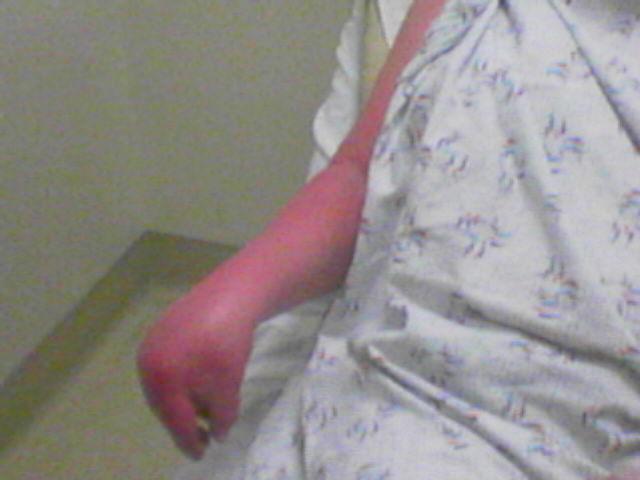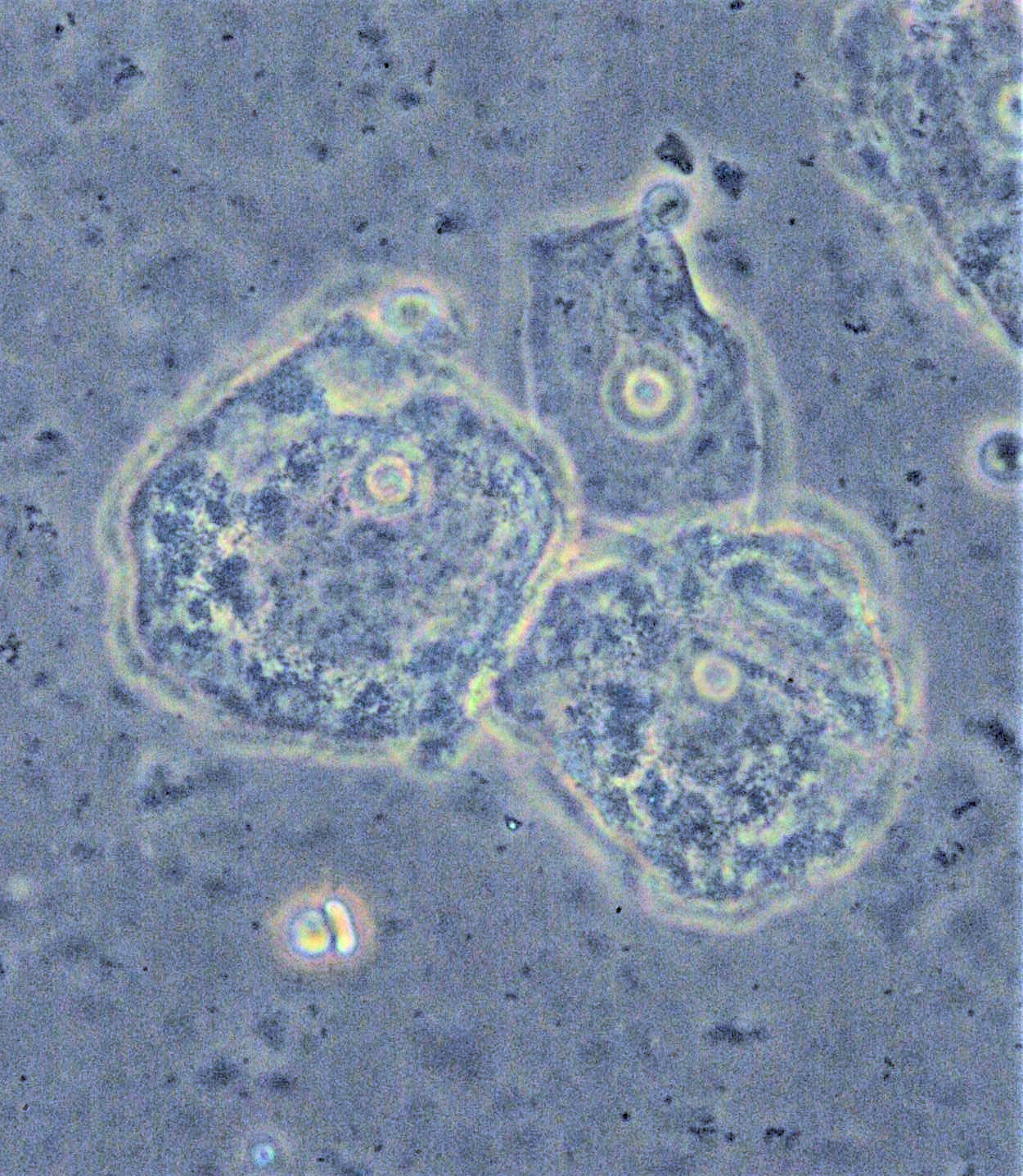|
Mycoplasmoidaceae
Mycoplasmoidaceae is a family of bacteria under the order Mycoplasmoidales. It contains the genera '' Eperythrozoon'', '' Malacoplasma'', '' Mycoplasmoides'', and ''Ureaplasma''. Members infect animals, including humans. Before 2018, they were known as the "pneumoniae group" of ''Mycoplasma''. Many species are sexually transmitted and cause pelvic inflammatory disease. Genera ''Eperythrozoon'' This genus includes the so-called "hemoplasmas", the uncultivated organisms that parasitise their hosts by adhering to erythrocytes. ''Mycoplasmoides'' This genus contains important human pathogens such as '' Mycoplasmoides genitalium'' and ''Mycoplasmoides pneumoniae''. ''Malacoplsma'' This genus contains '' Malacoplasma penetrans'', a known human pathogen. ''Ureaplasma'' As the name implies, ureaplasma is urease positive. This genera is distinct from other genera in Mollicutes in that it hydrolyses urea for generation of ATP. ''Ureaplasma'' ''spp.'' as human pathogens Both '' U ... [...More Info...] [...Related Items...] OR: [Wikipedia] [Google] [Baidu] |
Mollicutes
Mollicutes is a class of bacteria distinguished by the absence of a cell wall and its peptidoglycan. The word "Mollicutes" is derived from the Latin ' (meaning "soft" or "pliable"), and ' (meaning "skin"). Individuals are very small, typically only 0.2–0.3 micrometre, μm (200–300 nanometer, nm) in size and have a very small genome size. They vary in form, although most have sterols that make the cell membrane somewhat more rigid. Many are able to move about through bacterial gliding, gliding, but members of the genus ''Spiroplasma'' are helical and move by twisting. The best-known genus in the Mollicutes is ''Mycoplasma'', though it has been split in 2018 into several genera. Colonies show the typical "fried-egg" appearance. Mollicutes can be parasitic or saprotrophic. They can be parasites of various animals and plants, living on or in the host's cells. Many cause diseases in humans, attaching to cells in the respiratory or urogenital tracts, particularly species of ''Mycopl ... [...More Info...] [...Related Items...] OR: [Wikipedia] [Google] [Baidu] |
Mycoplasmoidales
Mycoplasmoidales is an order of bacteria in the class Mollicutes. The order consists of the families Mycoplasmoidaceae (formerly the "pneumoniae" group) and Metamycoplasmataceae (formerly the "hominis" group). It includes most human pathogens formerly classified in the genus ''Mycoplasma''. Phylogeny The currently accepted taxonomy is based on the List of Prokaryotic names with Standing in Nomenclature (LPSN) and National Center for Biotechnology Information The National Center for Biotechnology Information (NCBI) is part of the National Library of Medicine (NLM), a branch of the National Institutes of Health (NIH). It is approved and funded by the government of the United States. The NCBI is lo ... (NCBI). References {{Taxonbar, from=Q123359009 Mollicutes Bacteria orders ... [...More Info...] [...Related Items...] OR: [Wikipedia] [Google] [Baidu] |
Mycoplasma
''Mycoplasma'' is a genus of bacteria that, like the other members of the class ''Mollicutes'', lack a cell wall, and its peptidoglycan, around their cell membrane. The absence of peptidoglycan makes them naturally resistant to antibiotics such as the beta-lactam antibiotics that target cell wall synthesis. They can be parasitic or saprotrophic. In casual speech, the name ''"mycoplasma"'' (plural ''mycoplasmas'' or ''mycoplasms'') generally refers to all members of the class Mollicutes. In formal scientific classification, the designation ''Mycoplasma'' refers exclusively to the genus, a member of the Mycoplasmataceae, the only family in the order Mycoplasmatales (see "scientific classification"). In 2018, ''Mycoplasma'' was split with many clinically significant species moved to other genera in Mollicutes; see the page Mollicutes for an overview. Etymology The term "mycoplasma", from the Greek μύκης, ' (fungus) and πλάσμα, ' (formed), was first used by ... [...More Info...] [...Related Items...] OR: [Wikipedia] [Google] [Baidu] |
Mycoplasmoides Genitalium
''Mycoplasma genitalium'' (also known as ''MG','' Mgen, or since 2018, ''Mycoplasmoides genitalium'') is a sexually transmitted, small and pathogenic bacterium that lives on the mucous epithelial cells of the urinary and genital tracts in humans. Medical reports published in 2007 and 2015 state that Mgen is becoming increasingly common. Resistance to multiple antibiotics, including the macrolide azithromycin, which until recently was the most reliable treatment, is becoming prevalent. The bacterium was first isolated from the urogenital tract of humans in 1981, and was eventually identified as a new species of ''Mycoplasma'' in 1983. It can cause negative health effects in men and women. It also increases the risk for HIV spread with higher occurrences in those previously treated with the azithromycin antibiotics. Symptoms of infection Mgen is a bacterium recognized for causing urethritis in both men and women along with cervicitis and pelvic inflammation in women. It presents c ... [...More Info...] [...Related Items...] OR: [Wikipedia] [Google] [Baidu] |
Eperythrozoon
''Eperythrozoon'' is a genus of bacteria in the family Mycoplasmoidaceae Mycoplasmoidaceae is a family of bacteria under the order Mycoplasmoidales. It contains the genera '' Eperythrozoon'', '' Malacoplasma'', '' Mycoplasmoides'', and ''Ureaplasma''. Members infect animals, including humans. Before 2018, they were k .... Members of this family live inside red blood cells and are largely unculturable. As a result, many species are ''Candidatus''. Under the old understanding of this genus as a phylogenetically divergent group under ''Mycoplasma'', the included bacteria are also known as hemoplasmas or hemotrophic mycoplasmas. Taxonomy The members of this genus have variously been named under ''Eperythrozoon'', ''Haemobartonella'' (before that, ''Bartonella''), and ''Mycoplasma''. When they were under ''Mycoplasma'', most species had a specific epithet starting with ''hemo'' or ''haemo'' (meaning "blood"), giving them the informal name "hemoplasmas" or "hemotrophic mycoplasmas ... [...More Info...] [...Related Items...] OR: [Wikipedia] [Google] [Baidu] |
Non-gonococcal Urethritis
Nongonococcal urethritis (NGU) is inflammation of the urethra that is not caused by gonorrheal infection. For treatment purposes, doctors usually classify infectious urethritis in two categories: gonococcal urethritis, caused by gonorrhea, and nongonococcal urethritis (NGU). Symptoms and signs The symptoms of urethritis can include pain or a burning sensation upon urination (dysuria), a white/cloudy discharge and a feeling that one needs to pass urine frequently. For men, the signs and symptoms are discharge from the penis, burning or pain when urinating, itching, irritation, or tenderness. In women, the signs and symptoms are discharge from vagina, burning or pain when urinating, anal or oral infections, abdominal pain, or abnormal vaginal bleeding, which may be an indication that the infection has progressed to Pelvic Inflammatory Disease. NGU is transmitted by touching the mouth, penis, vagina or anus by penis, vagina or anus of a person who has NGU. NGU is more common in ... [...More Info...] [...Related Items...] OR: [Wikipedia] [Google] [Baidu] |
Complex Regional Pain Syndrome
Complex regional pain syndrome (CRPS type 1 and type 2), sometimes referred to by the hyponyms reflex sympathetic dystrophy (RSD) or reflex neurovascular dystrophy (RND), is a rare and severe form of neuroinflammatory and dysautonomic disorder causing chronic pain, neurovascular, and neuropathic symptoms. Although it can vary widely, the classic presentation occurs when severe pain from a physical trauma or neurotropic viral infection outlasts the expected recovery time, and may subsequently spread to uninjured areas. The symptoms of types 1 and 2 are the same, except type 2 is associated with nerve injury. Usually starting in a single limb, CRPS often first manifests as pain, swelling, limited range of motion, or partial paralysis, and/or changes to the skin and bones. It may initially affect one limb and then spread throughout the body; 35% of affected individuals report symptoms throughout the body. Two types are thought to exist: CRPS type 1 (previously referred to as ' ... [...More Info...] [...Related Items...] OR: [Wikipedia] [Google] [Baidu] |
Synovial Membrane
Synovial () may refer to: * Synovial fluid * Synovial joint A synovial joint, also known as diarthrosis, joins bones or cartilage with a fibrous joint capsule that is continuous with the periosteum of the joined bones, constitutes the outer boundary of a synovial cavity, and surrounds the bones' articulati ... * Synovial membrane * Synovial bursa {{disambiguation ... [...More Info...] [...Related Items...] OR: [Wikipedia] [Google] [Baidu] |
Reactive Arthritis
Reactive arthritis, previously known as Reiter's syndrome, is a form of inflammatory arthritis that develops in response to an infection in another part of the body (cross-reactivity). Coming into contact with bacteria and developing an infection can trigger the disease. By the time a person presents with symptoms, the "trigger" infection has often been cured or is in remission in chronic cases, thus making determination of the initial cause difficult. The manifestations of reactive arthritis include the following triad of symptoms: inflammatory arthritis of large joints, inflammation of the eyes in the form of conjunctivitis or uveitis, and urethritis in men or cervicitis in women. Arthritis occurring alone following sexual exposure or enteric infection is also known as reactive arthritis. Affected people may present with mucocutaneous lesions, as well as psoriasis-like skin lesions such as circinate balanitis, and keratoderma blennorrhagicum. Enthesitis can involve the ... [...More Info...] [...Related Items...] OR: [Wikipedia] [Google] [Baidu] |
Vaginal Yeast Infection
Vaginal yeast infection, also known as candidal vulvovaginitis and vaginal thrush, is excessive growth of yeast in the vagina that results in irritation. The most common symptom is vaginal itching, which may be severe. Other symptoms include Dysuria, burning with urination, a thick, white vaginal discharge that typically does not smell bad, pain during sex, and redness around the vagina. Symptoms often worsen just before a period. Vaginal yeast infections are due to excessive growth of ''Candida (fungus), Candida''. These yeast are normally present in the vagina in small numbers. Vaginal yeast infections are typically caused by the yeast species ''Candida albicans''. ''Candida albicans'' is a common fungus often harbored in the mouth, digestive tract, or vagina without causing adverse symptoms. The causes of excessive ''Candida'' growth are not well understood, but some predisposing factors have been identified. It is not classified as a sexually transmitted infection; however, i ... [...More Info...] [...Related Items...] OR: [Wikipedia] [Google] [Baidu] |
Bacterial Vaginosis
Bacterial vaginosis (BV) is an infection of the vagina caused by excessive growth of bacteria. Common symptoms include increased vaginal discharge that often smells like fish. The discharge is usually white or gray in color. Burning with urination may occur. Itching is uncommon. Occasionally, there may be no symptoms. Having BV approximately doubles the risk of infection by a number of sexually transmitted infections, including HIV/AIDS. It also increases the risk of early delivery among pregnant women. BV is caused by an imbalance of the naturally occurring bacteria in the vagina. There is a change in the most common type of bacteria and a hundred to thousandfold increase in total numbers of bacteria present. Typically, bacteria other than ''Lactobacilli'' become more common. Risk factors include douching, new or multiple sex partners, antibiotics, and using an intrauterine device, among others. However, it is not considered a sexually transmitted infection and, unlike g ... [...More Info...] [...Related Items...] OR: [Wikipedia] [Google] [Baidu] |
Painful Bladder Syndrome
Interstitial cystitis (IC), a type of bladder pain syndrome (BPS), is chronic pain in the bladder and pelvic floor of unknown cause. Symptoms include feeling the need to urinate right away, needing to urinate often, bladder pain (pain in the organ) and pain with sex. IC/BPS is associated with depression and lower quality of life. Some of those affected also have irritable bowel syndrome and fibromyalgia. The cause of interstitial cystitis is unknown. While it can, it does not typically run in a family. The diagnosis is usually based on the symptoms after ruling out other conditions. Typically the urine culture is negative. Ulceration or inflammation may be seen on cystoscopy. Other conditions which can produce similar symptoms include overactive bladder, urinary tract infection (UTI), sexually transmitted infections, prostatitis, endometriosis in females, and bladder cancer. There is no cure for interstitial cystitis and management of this condition can be challenging. T ... [...More Info...] [...Related Items...] OR: [Wikipedia] [Google] [Baidu] |






